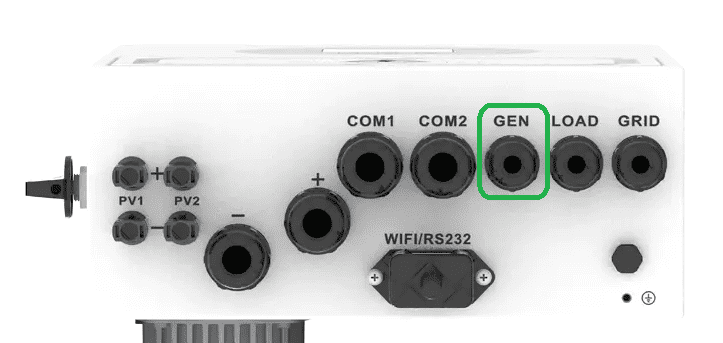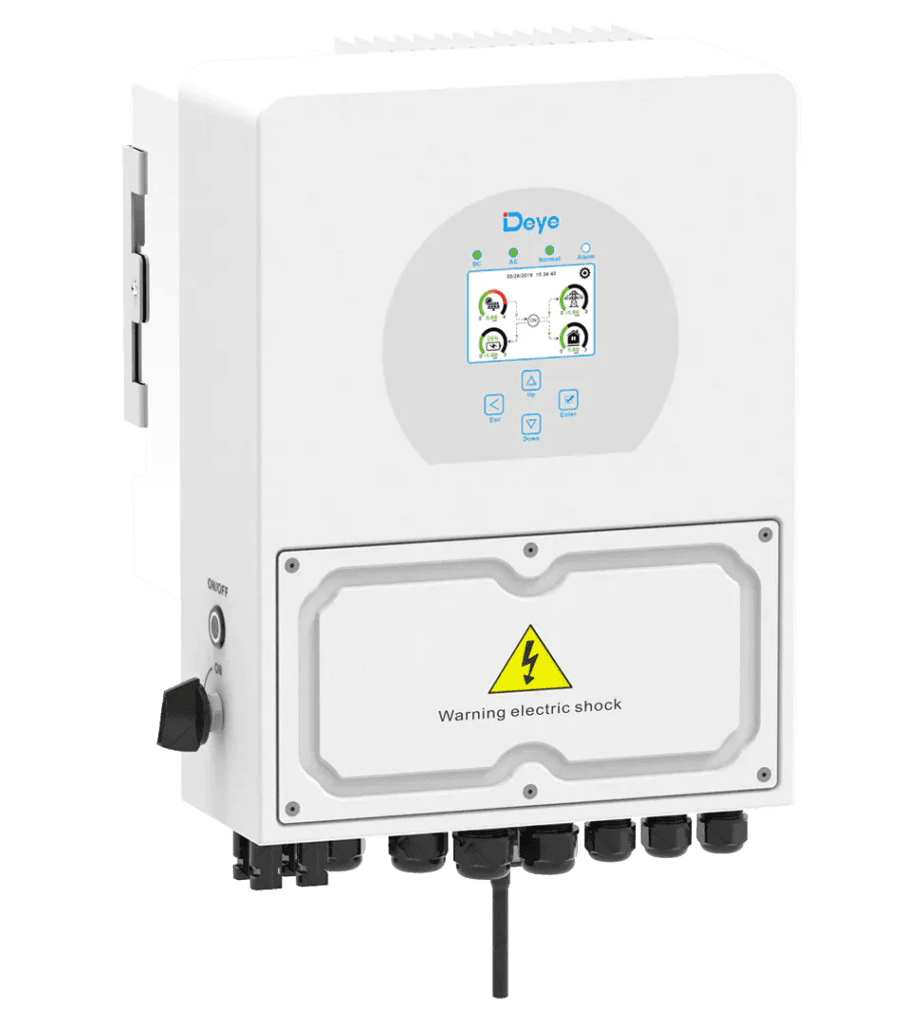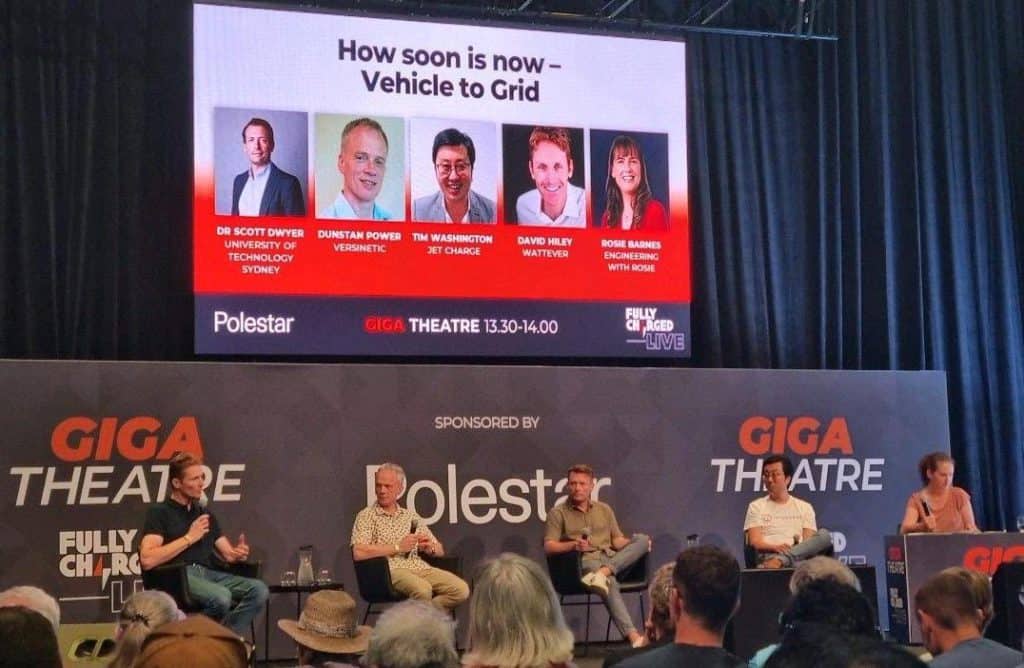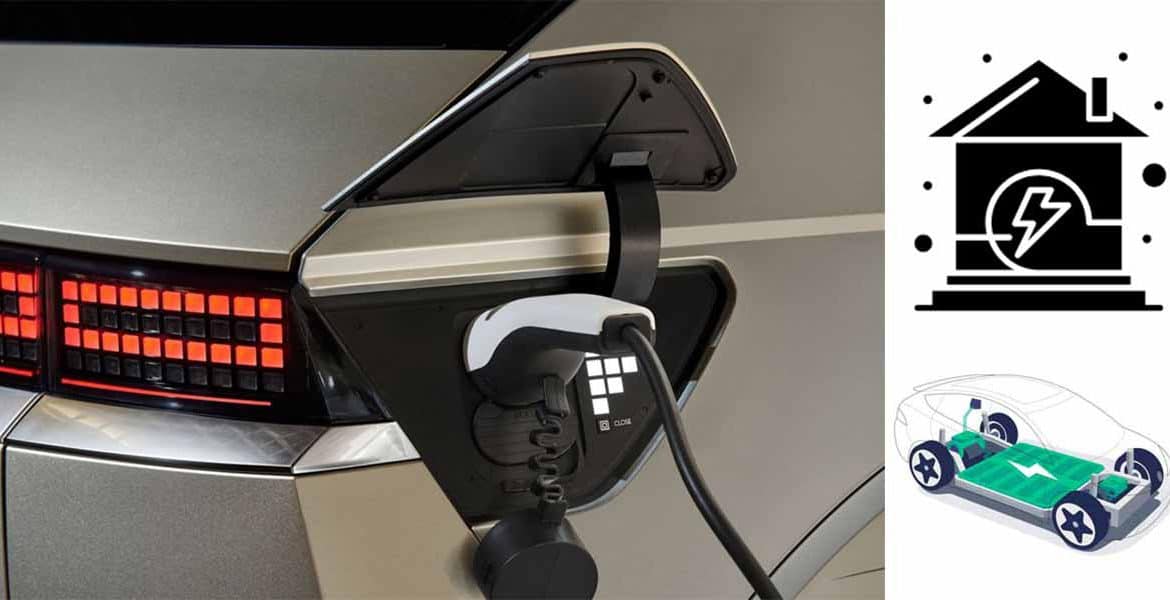Since the Hyundai Ioniq 5 landed in Australia in late 2021, there have been an increasing number of EVs that offer Vehicle To Load (V2L) capability. We’ve powered electric BBQs, coffee machines and high-pressure hoses from our Ioniq 5, so I can attest that there are many uses for V2L. But is it possible to do more than run the occasional appliance? After all, there’s a massive 70kWh battery inside.
Could you power your home from an EV’s V2L capability?
We wanted to understand how you could power your home from an EV with V2L using today’s technology. A range of existing CEC-approved hybrid inverters already supports an auxiliary AC or Generator input. These inverters are commonly used for off-grid homes but are also capable of being grid connected as well. We’ll share exactly how you can use these hybrid inverters to access your V2L EV’s battery and effectively access ‘Vehicle to Home (V2H)’ charging.
Here’s how V2L power from an EV can be safely used to run your home
Hybrid inverters that offer an auxiliary or generator AC input can support charging a separate stationary battery or directly powering circuits within a home. Instead of plugging in a backup generator – as you might on an off-grid set-up, you connect your V2L EV to provide the power.

Connection panel on a Hybrid Inverter featuring a GENerator input
Finding the right hybrid inverter for an EV V2L
The hunt was on for a low-cost all-in-one solar hybrid inverter capable of supporting the single-phase power from our car’s V2L. It also needed the ability to charge an existing low-voltage home battery and run isolated circuits. We set a total budget of under $5,000, including all installation costs, an AC transfer switch, appliance inlet etc, using fully certified/compliant electrical components.
We found an inverter that can deliver on all these requirements – the Deye 5kW single-phase hybrid inverter (SUN-5K-SG04LP1-AU). The Deye inverter is available from multiple suppliers in Australia for ~$2700 and the device supports:
- single phase power
- 6500 W solar via dual MPPT
- separate generator AC input
- max 120A battery charge/discharge current
- 40V-60V battery

Our experience with extending V2L to V2H so far
We’ve installed the Deye 5kW hybrid inverter in our garage and have been able to successfully power it from an Ioniq 5 using V2L from its charging port. We mostly used our EV’s V2L to charge our home battery. But we’ve also used it to power a separate load connected to the inverter. The Deye comes with all the requisite AC/generator settings to power multiple electrical circuits within a home. When coupled with a battery, this inverter can supply up to 5000W of loads (3600W from the Ioniq 5 and 1400W from the battery).
How can it work in practice (with a separate home battery):
The Deye inverter can use AC power from the grid or a generator (V2L in this case) or DC power from a battery pack.
For this scenario, let’s assume we have a solar PV and battery system that provides sufficient power to cover the attached loads up until 5 pm on most days. After 5pm, we start drawing down on a small battery (which has a 5kWh capacity).
Before 5 pm we plug our EV’s V2L cable into a dedicated “appliance inlet” connected to the inverter’s generator input through a 16A circuit breaker. At 5 pm, a programmable timer switches an AC transfer switch to disconnect the inverter from grid power. It will immediately switch any connected loads (house circuits) to using power sourced from the small stationary battery. It will turn on the generator input within a minute, to pull power from the EV (via V2L). A schedule within the Deye inverter determines whether it should charge the home battery (up to a maximum of 90% State of Charge) or just supply power as needed to any circuits connected to the “Load” output of the inverter.
Note: The vehicle’s V2L power limit (eg. 3600W) is set in the inverter. As a result, the inverter never draws more power from the car than it can supply and the 16A circuit breaker also provides protection for the car from overcurrent (in addition to its own protection). The inverter will draw power up to the nominated generator’s (V2L in this case) limit. The home battery provides any excess up to the inverter’s peak (5500W) and continuous (5000W) AC output.
EVs in Australia with V2L
There is an increasing range of EV models in Australia that might be used to power some of your home. As of 8th February 2023, the following EVs in Australia offer V2L:
- BYD Atto 3
- Genesis GV60/70/80
- Hyundai ioniq 5
- Kia EV6
- Kia Niro EV
- MG4 (coming H1 2023)
- MG ZS EV
While not a totally seamless and hands-off solution, this V2L ‘home power hack’ could support many current and prospective EV owners, now and into the future.
Key considerations with using V2L to power your home
Reflecting on our experience of specifying, installing and operating a V2L solution in our garage to power our home battery (and optionally home circuits), here’s our checklist of what you might think about.
- Do some planning and chat with a solar/battery installer familiar with connecting generators to provide off-grid power. Talk to that installer about the discharge rate your V2L offers, spare capacity in your EV for daily driving, how much power you want to avoid buying from the grid (all night or just peak hours).
- All mains electrical work needs to be done by a licensed electrician.
- You’ll need separate cables to charge and discharge your EV, i.e. you can charge with a standard AC EVSE. To use the V2L feature, you’ll need to remove the EVSE cable, plug in a V2L adaptor, and connect that to the hybrid inverter’s generator input.
- You’ll need to set appropriate limits in the inverter to stay below the vehicle’s maximum continuous V2L power limits.
- If you have a separate stationary battery, you will need to set schedules in the inverter to determine whether the V2L charges the battery and to what State of Charge.
- All current EVs in Australia with V2L only support single-phase. That means you’ll need a hybrid inverter that takes a single-phase generator input. If you have three-phase power in your home, current EVs with V2L won’t be able to power 3 phase appliances.
How does this solution compare to using a dedicated V2H/V2G solution like the Wallbox Quasar
The Wallbox Quasar was approved for use in South Australia in late 2022 and supports the Chademo bidirectional charging protocol. Unfortunately, that protocol is only supported by the Nissan Leaf and Mitsubishi Outlander PHEV. Both these vehicles sell in relatively low volumes in Australia. The cost for these V2G units is around $10,000. So, given the big price tag, limited vehicle support and the questionable battery degradation history of the Nissan Leaf and Mitsubishi Outlander PHEV (I’ve owned both and directly experienced this issue), I can’t see Chademo-based solutions selling in any significant volumes in Australia.
What is more interesting is the companies, like Ambibox, who have been building and testing CCS compatible V2G solutions with plans to release them in select markets in 2023/24. Hopefully, these will support a broader range of EVs and offer a lower price point. Which EVs will have the software and hardware to support V2G via CCS is not yet clear – however, some models, like the VW ID5, are compatible.
What are the benefits of a pure V2H/V2G solution?
Compared to the V2L and hybrid inverter solution outlined earlier, dedicated V2H/V2G should:
- support bidirectional charging with one plug/cable
- OCPP communications allow for third-party control e.g. retailers, VPPs, apps (Charge HQ etc)
- cover the full power needs of a home – e.g likely up to 7kW single phase and 22kW three phase
- exporting power to the grid at similarly high outputs – 7 to 22kW.
With the V2L solution outlined earlier, you’ll need to swap out connectors to switch between charging and discharging. The V2L output on most EVs is relatively low – generally between 10-16A or 2300 to 3600 watts. This isn’t sufficient to power the average on-grid home on its own. However, an MG4 owner in the UK has been able to pull 7kW via an upgraded V2L cable, so there is potential that there will be EVs coming to the Australian market that can support higher V2L outputs.
Manufacturer warranty support for use in V2L, V2H and V2G
This is a grey area. Few manufacturers support, let alone have stated limits, on the use of V2L, V2H and V2G. With V2L, the current or power output limits are covered in the user manual and there are in-built circuit breakers to prevent drawing too high a load from the vehicle. For V2H and V2G, as most vehicles don’t have the software (and sometimes hardware) to support it, consumers won’t be able to utilise it unless the manufacturer offering an OTA update or upgrade/retrofit option.
It’s worth noting that VW’s ID5 in Europe limits bidirectional charging up to a total of 4000 hours or 10,000kWh. You might expect similar restrictions on battery cycling and potentially discharge rates. Until manufacturers understand whether there is any material impact upon driving range that would impact warranted battery capacity/range, we’re likely to see limitations set.
An EV is the largest battery anyone is likely to ever have in their home. So, even if you tap into a fraction of your EV V2L potential, there are real opportunities to be more energy and cost-efficient – plus access the superior value in an EV battery vs. buying a stand-alone home battery.
David Hiley presented this case study at the Vehicle to Grid panel at the Fully Charged EV event at 1:30pm on the 12 March 2023 @ the ICC Sydney.

To find out more about a Hybrid Inverter solution, head to the Deye website. (ps. WATTever has no affiliation or commercial relationship with Deye. Information contained in this blog post is my personal experience and opinion) .

